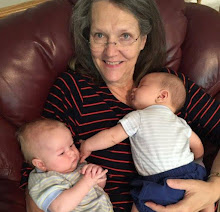Indian Mission—1858
Our Pioneer Heritage, Vol. 2, p.52-53In the year 1858 President Young wrote Jacob Hamblin, who, in August, 1857, had been appointed president of the Santa Clara mission, giving him instructions to take a picked group and go among the Moquis Indians on the east side of the Colorado River. Jacob was to head the expedition. His companions would be Dudley Leavitt, Thomas Leavitt, Frederick Hamblin, William Hamblin, Samuel Knight, Ira Hatch, Andrew Gibbons, Benjamin Knell, Ammon M. Tenney as Spanish interpreter, and James Davis, a Welshman who had been sent from Salt Lake City to explore the possibility of the Moquis being the lost descendants of Madoc and speaking an ancient form of the Welsh tongue. Maraguts, an Indian who had crossed the Colorado several times, offered himself as a guide to the party. Their hope was to establish the gospel among the Moquis nation.
Our Pioneer Heritage, Vol. 2, p.52
The little company left the Santa Clara settlement on October 28th, traveling south and east. After crossing the Rio Virgin and Cedar Ridge, they came to a clear spring flowing out of the red buttes and it was here Mr. Hamblin quickly sized up the place as a strategic spot for a fort to guard the historic east-west trails from the Colorado's rim to the Rio Virgin.
Our Pioneer Heritage, Vol. 2, p.52
The journey across the lower reaches of the Kaibab over the stupendous buttes, cliffs, and fissures, taxed to a limit the endurance of both men and animals. It was a land of weird beauty, but the men soon began to realize that preaching the gospel among the Indians would also exact a price. On the tenth day out from Santa Clara they followed the narrow and dangerous trail down to the bottom of the canyon and, at the "Crossing of the Fathers," they sent their frightened animals into the treacherous Colorado River. After a terrible experience they reached the eastern bank. The trail beyond was rough and dangerous and it was necessary to keep a lookout for the Navajo war parties. Three days later they came to a place where sheep had been herded, then to a garden under a cliff of rocks. It was watered [p.53] from a small spring and occupied fine terraces, walled up on three sides. As they passed they saw that vegetables such as were grown in their own gardens at home had been grown here, and on the summit of the cliff was one of the three great mesas upon which the Hopi nation had situated itself to discourage assault from other tribes. The Moquis insisted upon being known as Hopi, their true name. The name of their town was Oraibi, and as the men stood in the ancient town square they could see not a single door to the flat topped dwellings which served this interesting people. To gain entrance it was necessary to climb a ladder and drop down into the interiors of the houses through a hole in the roof.
Our Pioneer Heritage, Vol. 2, p.53
Soon they were approached by a young chief who said, "I am Tuba, chief of the water and corn clan." Jacob informed him that they were Mormon missionaries and had come to make friends with the Hopi people. They were graciously received and in the days following Jacob and the other brethren paid a visit to Hotevilla, Shipoloir, Mishongnovi, Walpi, Sichomoir and Polacca, the other villages of the Hopi nation, escorted by Chief Tuba. Word had spread that Jacob's company were the white men of their tribal prophecy.
Our Pioneer Heritage, Vol. 2, p.53
In the name of the great white chief, Brigham Young, Mr. Hamblin thanked Tuba for all the kindness showered upon them. He suggested that the Hopi people trade and visit freely with the Mormon people and that the entire nation move itself across the river and establish themselves on more fertile land. In the ceremonial courts of each village the brethren sang a few hymns and asked God's blessings on their people. Jacob preached sermons in the Piute language; Ammon Tenney spoke in Spanish, and James Davis in the vernacular of his native Wales. The other missionaries were selected to visit among the Hopi villages, learn their language, study their ways of life, and preach the gospel so that all might understand and profit by it.


2 comments:
Hi, and greetings from beautiful New Harmony, UT A friend of mine just sent me a link to your blog. I was excited to read about my great grandpa, James George Davis. My Grandpa was Albert Davis, and my mother was Marva Davis Prince. I love reading about my relatives. Thanks so much for taking the time to do this. Your cousin, in New Harmony--Deanna Prince Groke
Deanna we are cousin many times. Our closest relationship is 2 cousin 1 time removed. Your mother Marva Davis Prince is the 1st cousin to my grandmother Laura Elizabeth Parker Wood. Your grandfather Albert was the younger brother of my great grandmother Elizabeth Ann Davis Parker.
Our other cousin relationships go back to English Kings, John 'Lackland' King of England, Henry II King of England, Eleanor of Aquitaine queen of France and England and many more. Making us 25th, 27th, 28th, 29th and 30th cousins.
Post a Comment